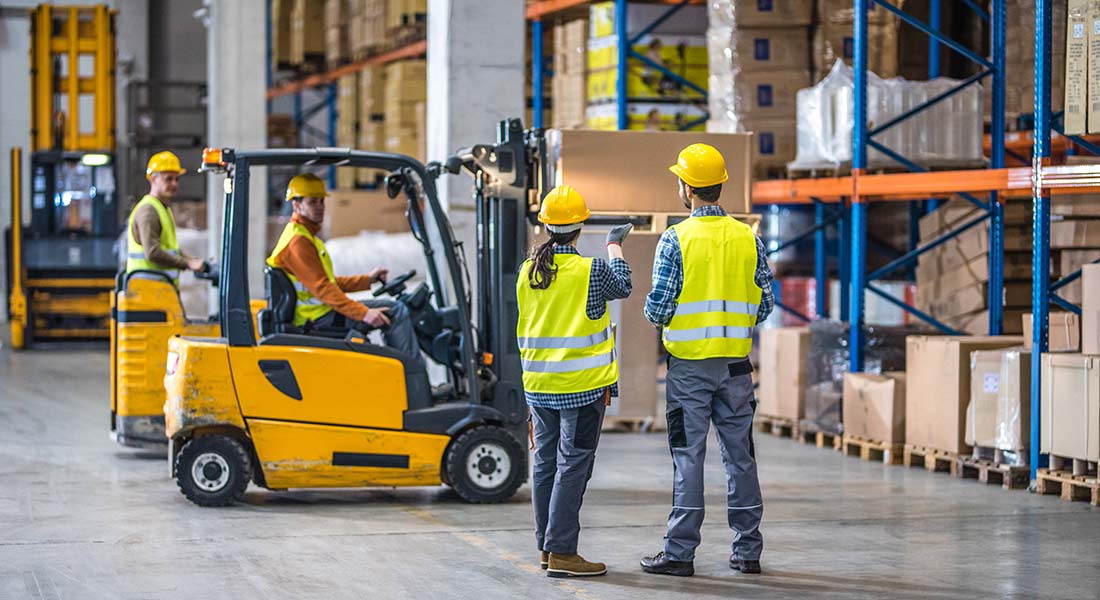Estimated reading time: 4 minutes
According to the Occupational Health and Safety Administration (OSHA), there are more than 40,000 forklift-related injuries and over 90 fatal accidents annually in the United States. Forklift accidents are bound to happen, but most accidents can be prevented with proper training and workplace safety procedures. These small investments in time and money can make a world of difference in your business.
Your workers will feel confident knowing that their safety is a top priority. And you will have the peace of mind that comes with knowing that you are taking the steps necessary to dramatically reduce the chances of workplace accidents. When accidents can be avoided, so can an increase in your business insurance premiums. This Balboa Capital blog post looks at some proven forklift safety tips.
Know the warning signs.
Forklifts, also called powered industrial trucks (PITs), perform many tasks at construction sites, warehouses, factories, and manufacturing plants. Therefore, it looks relatively easy when you see a forklift being used by someone who has completed the necessary training.
However, operating a forklift can be very difficult, depending on the work environment. For example, obstacles in a forklift’s path or a lack of room to maneuver can present problems for even the most experienced forklift operator. Other warning signs include:
- Slippery, greasy, or uneven floors
- Not enough distance between forklifts
- Lack of clearance space
- Overhead obstruction
- Improperly stacked materials
- Poor lighting
If you see these or any other warning signs, make sure you address them right away. A safe, clutter-free workplace helps minimize the risk of personal injury and property damage.
How to safely operate a forklift.
First off, it is essential to note that federal law prohibits anyone under 18 from operating a forklift. All forklift operators aged 18 and older must be trained and certified. You can find more information about this on the U.S. Department of Labor website. Optimum workplace safety starts with training and certification that follows OSHA standards. You can provide your new employees with training during the onboarding process. Here are some of the more common practices for safely driving and operating a forklift:
- Never operate a forklift with wet hands or shoes
- Wear your seatbelt and hardhat
- Do not stack top-heavy loads or unsecured loads
- Watch out for workers; sound the horn to alert them
- Never make sharp turns
- Always drive the speed limit
- Drive with the load low and slightly tilted backward
- Never raise or lower the load when driving
- Never allow anyone to walk under the forklift
When you are finished using the forklift, lower the forks to the floor, shut off the motor and set the brakes. Lastly, ensure your workplace has adequate ventilation to prevent carbon monoxide poisoning from exhaust fumes.
Inspect your forklift every day.
Forklifts are incredibly well-built and can withstand many hours of use. That said, they must be regularly inspected to ensure everything works correctly. OSHA indicates that a forklift needs to be checked daily or immediately following a shift in which it is used.
There are no established protocols for inspecting a forklift, but you should always take the time to conduct the most thorough inspection possible. Following are some of the most critical checkpoints that should be on your daily inspection checklist.
- Check all fluid levels
- Look for leaks on the ground below
- Look for cracks or visible defects on the body
- Check tire condition and tire pressure
- Test brakes, horn, and steering system
- Look for damage on the mast and overhead guard
- Examine forks for bending, cracks, etc.
You can contact the forklift dealer where you purchased or financed your forklift to ask if they have an operator’s manual with a recommended list of things to inspect. Having this information readily available can save you time and ensure that you are conducting an inspection based on the make and model of your forklift.
Mark your floors.
Another proven way to prevent accidents is to add signage and a floor marking system. Brightly colored signs (stop signs, speed limit signs, etc.) and floor markers can help keep your workers aware of their surroundings and away from potentially dangerous forklift paths. Floor markers can also prevent drivers from entering hazardous areas such as a loading dock or tight spaces where the forklift might get stuck.
When marking your floors, consider adding large, colorful icons, too. A big yellow forklift, for example, is an excellent addition to a path. Floor marking can be achieved with heavy-duty stickers, commercial paint, and floor marking tape. Commercial painting businesses specialize in floor marking; they can create the aisles and passageways your business needs to operate safely.
Conclusion.
Considering the time and expense involved with on-the-job accidents and Worker’s Compensation claims, not identifying and correcting forklift hazards poses risks to your bottom line. So, you must do everything possible to prevent forklift injuries and help your employees be as productive as possible.
Balboa Capital, a Division of Ameris Bank, is not affiliated with nor endorses the Occupational Health and Safety Administration or the U.S. Department of Labor. The opinions voiced in this material are for general information only and are not intended to provide specific advice or recommendations for any individual.
